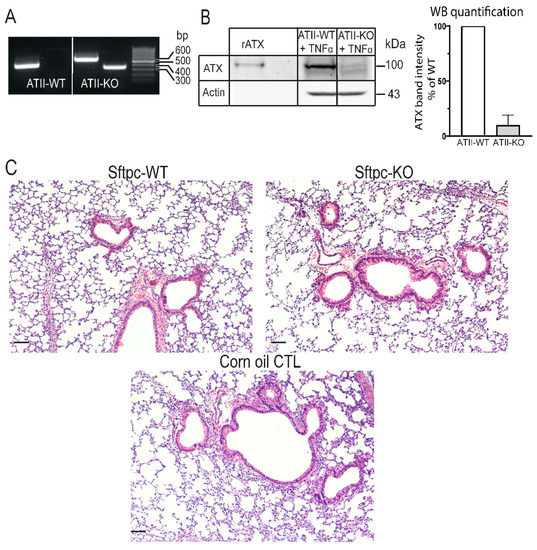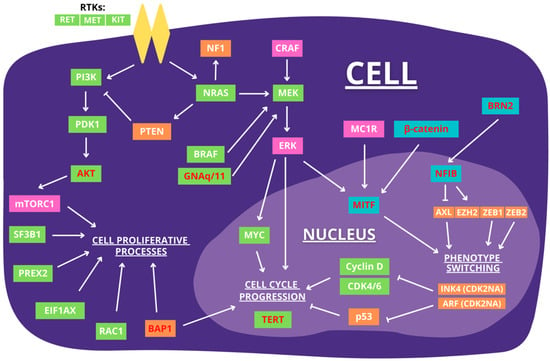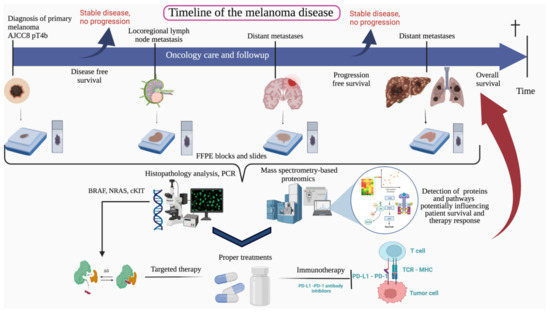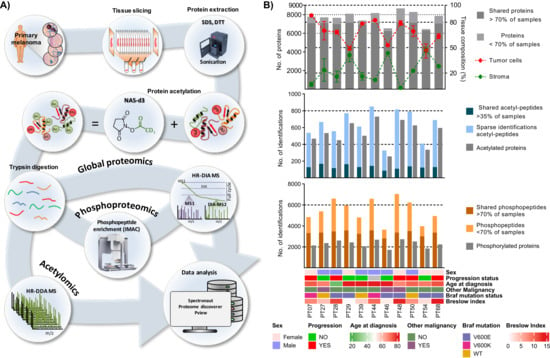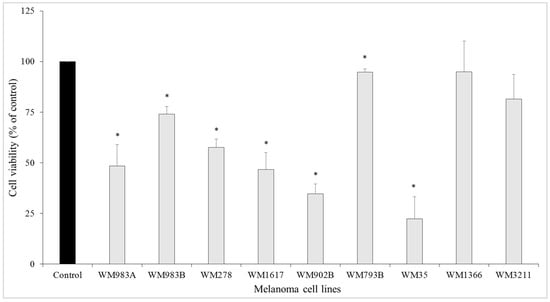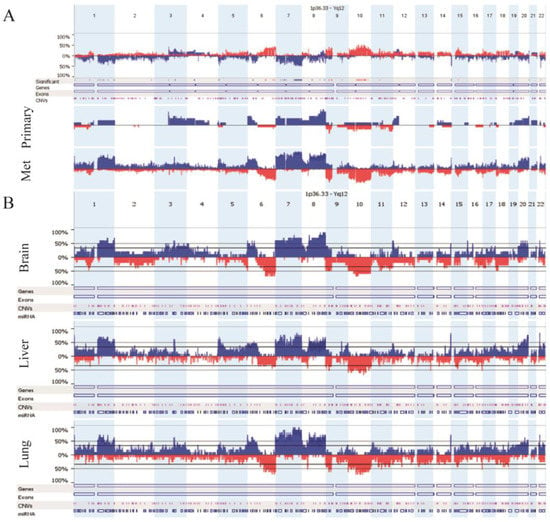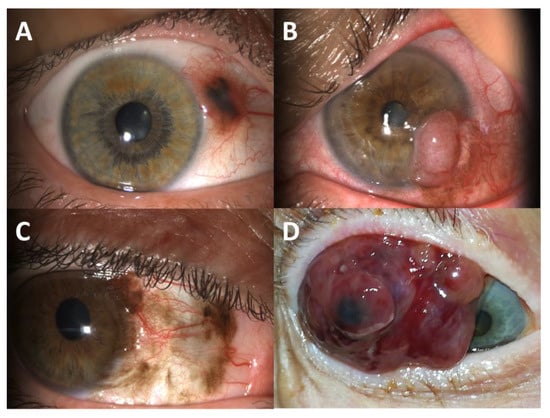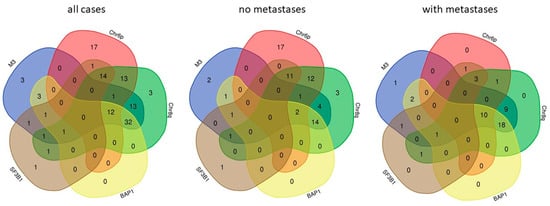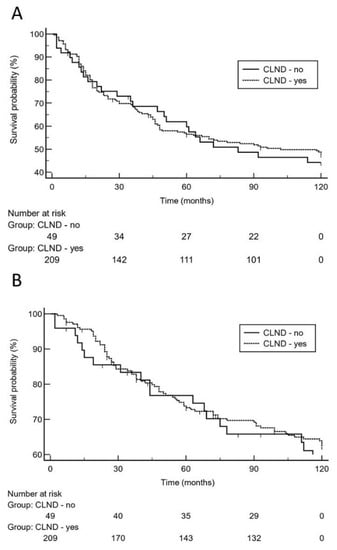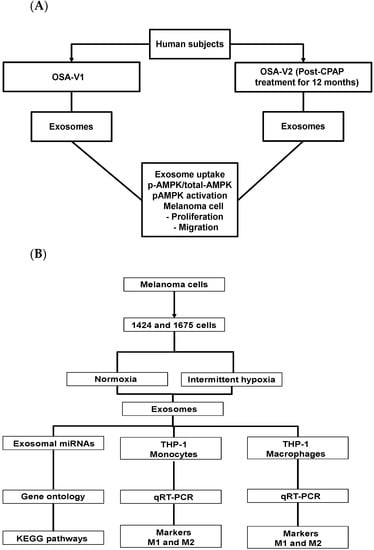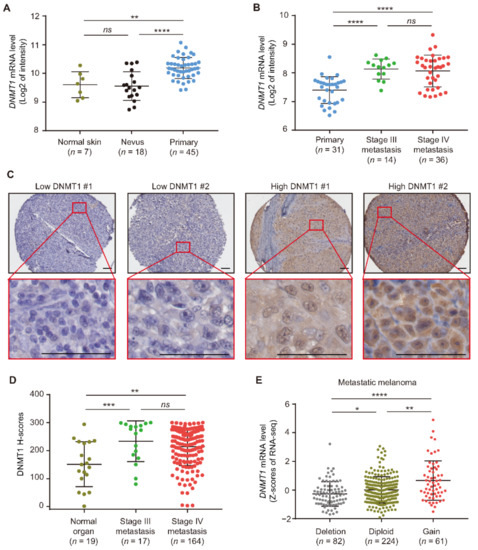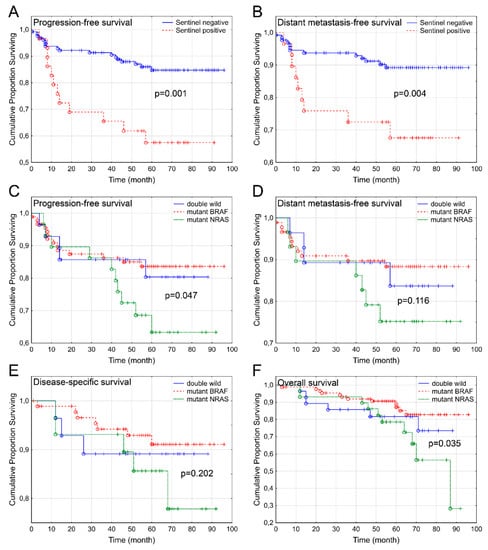Metastatic Progression of Human Melanoma
Share This Topical Collection
Editors
 Prof. Dr. Jozsef Tímar
Prof. Dr. Jozsef Tímar
 Prof. Dr. Jozsef Tímar
Prof. Dr. Jozsef Tímar
E-Mail
Website
Guest Editor
2nd Department of Pathology, Semmelweis University, Budapest, Hungary
Interests: melanoma; progression; genomics; signaling
 Dr. Andrea Ladányi
Dr. Andrea Ladányi
 Dr. Andrea Ladányi
Dr. Andrea Ladányi
E-Mail
Website
Guest Editor
National Institute of Oncology, Budapest, Hungary
Interests: melanoma; immune microenvironment; immunotherapy
Topical Collection Information
Dear Colleagues,
Melanoma is the most metastatic human cancer, and can progress even from a very small sub-millimeter-sized primary. Accordingly, to understand the biology behind it may not only reveal the unique molecular determinants of this biology but may also identify the common, pan-cancer characteristics of metastatic progression. This Special Issue of Cancers is dedicated to human melanoma progression. Although there were fundamental improvements in the management of the metastatic disease of melanoma patients, the disease itself is still not curable when it becomes metastatic. To further improve the treatment of melanoma, we have to better understand the biology, the genetic background behind, the unique immunology of melanoma, and most importantly, the background of therapy resistance: chemo-, targeted or immunological. We expect submissions for this endeavor from researchers, molecular pathologists, immunologists and oncologists who can contribute to a better understanding of melanoma.
Prof. Dr. Jozsef Tímar
Dr. Andrea Ladányi
Guest Editors
Manuscript Submission Information
Manuscripts should be submitted online at www.mdpi.com by registering and logging in to this website. Once you are registered, click here to go to the submission form. Manuscripts can be submitted until the deadline. All submissions that pass pre-check are peer-reviewed. Accepted papers will be published continuously in the journal (as soon as accepted) and will be listed together on the collection website. Research articles, review articles as well as short communications are invited. For planned papers, a title and short abstract (about 100 words) can be sent to the Editorial Office for announcement on this website.
Submitted manuscripts should not have been published previously, nor be under consideration for publication elsewhere (except conference proceedings papers). All manuscripts are thoroughly refereed through a single-blind peer-review process. A guide for authors and other relevant information for submission of manuscripts is available on the Instructions for Authors page. Cancers is an international peer-reviewed open access semimonthly journal published by MDPI.
Please visit the Instructions for Authors page before submitting a manuscript.
The Article Processing Charge (APC) for publication in this open access journal is 2900 CHF (Swiss Francs).
Submitted papers should be well formatted and use good English. Authors may use MDPI's
English editing service prior to publication or during author revisions.
Keywords
- human melanoma
- metastasis models
- oncogenic signaling
- organ metastasis
- genomics
- immune microenvironment
- prognosticators
- predictors of target therapies
Published Papers (14 papers)
Open AccessEditorial
Metastatic Progression of Human Melanoma
by
József Tímár and Andrea Ladányi
Viewed by 1052
Abstract
This Topical Collection, comprising 13 papers (10 original articles and 3 reviews), addresses various aspects of the field of melanoma progression: genomic and proteomic approaches, experimental studies, the questions of sentinel lymph node dissection, and metastasis formation of uveal and conjunctival melanomas is
[...] Read more.
This Topical Collection, comprising 13 papers (10 original articles and 3 reviews), addresses various aspects of the field of melanoma progression: genomic and proteomic approaches, experimental studies, the questions of sentinel lymph node dissection, and metastasis formation of uveal and conjunctival melanomas is also discussed [...]
Full article
Open AccessArticle
Prometastatic Effect of ATX Derived from Alveolar Type II Pneumocytes and B16-F10 Melanoma Cells
by
Mélanie A. Dacheux, Sue Chin Lee, Yoojin Shin, Derek D. Norman, Kuan-Hung Lin, Shuyu E, Junming Yue, Zoltán Benyó and Gábor J. Tigyi
Cited by 7 | Viewed by 2591
Abstract
Although metastases are the principal cause of cancer-related deaths, the molecular aspects of the role of stromal cells in the establishment of the metastatic niche remain poorly understood. One of the most prevalent sites for cancer metastasis is the lungs. According to recent
[...] Read more.
Although metastases are the principal cause of cancer-related deaths, the molecular aspects of the role of stromal cells in the establishment of the metastatic niche remain poorly understood. One of the most prevalent sites for cancer metastasis is the lungs. According to recent research, lung stromal cells such as bronchial epithelial cells and resident macrophages secrete autotaxin (ATX), an enzyme with lysophospholipase D activity that promotes cancer progression. In fact, several studies have shown that many cell types in the lung stroma could provide a rich source of ATX in diseases. In the present study, we sought to determine whether ATX derived from alveolar type II epithelial (ATII) pneumocytes could modulate the progression of lung metastasis, which has not been evaluated previously. To accomplish this, we used the B16-F10 syngeneic melanoma model, which readily metastasizes to the lungs when injected intravenously. Because B16-F10 cells express high levels of ATX, we used the CRISPR-Cas9 technology to knock out the ATX gene in B16-F10 cells, eliminating the contribution of tumor-derived ATX in lung metastasis. Next, we used the inducible Cre/loxP system (Sftpc-CreER
T2/Enpp2
fl/fl) to generate conditional knockout (KO) mice in which ATX is specifically deleted in ATII cells (i.e., Sftpc-KO). Injection of ATX-KO B16-F10 cells into Sftpc-KO or Sftpc-WT control littermates allowed us to investigate the specific contribution of ATII-derived ATX in lung metastasis. We found that targeted KO of ATX in ATII cells significantly reduced the metastatic burden of ATX-KO B16-F10 cells by 30% (unpaired
t-test,
p = 0.028) compared to Sftpc-WT control mice, suggesting that ATX derived from ATII cells could affect the metastatic progression. We detected upregulated levels of cytokines such as IFNγ (unpaired
t-test,
p < 0.0001) and TNFα (unpaired
t-test,
p = 0.0003), which could favor the increase in infiltrating CD8
+ T cells observed in the tumor regions of Sftpc-KO mice. Taken together, our results highlight the contribution of host ATII cells as a stromal source of ATX in the progression of melanoma lung metastasis.
Full article
►▼
Show Figures
Open AccessReview
Genomic and Transcriptomic Underpinnings of Melanoma Genesis, Progression, and Metastasis
by
Olga S. Cherepakhin, Zsolt B. Argenyi and Ata S. Moshiri
Cited by 9 | Viewed by 3471
Abstract
Melanoma is a deadly skin cancer with rapidly increasing incidence worldwide. The discovery of the genetic drivers of melanomagenesis in the last decade has led the World Health Organization to reclassify melanoma subtypes by their molecular pathways rather than traditional clinical and histopathologic
[...] Read more.
Melanoma is a deadly skin cancer with rapidly increasing incidence worldwide. The discovery of the genetic drivers of melanomagenesis in the last decade has led the World Health Organization to reclassify melanoma subtypes by their molecular pathways rather than traditional clinical and histopathologic features. Despite this significant advance, the genomic and transcriptomic drivers of metastatic progression are less well characterized. This review describes the known molecular pathways of cutaneous and uveal melanoma progression, highlights recently identified pathways and mediators of metastasis, and touches on the influence of the tumor microenvironment on metastatic progression and treatment resistance. While targeted therapies and immune checkpoint blockade have significantly aided in the treatment of advanced disease, acquired drug resistance remains an unfortunately common problem, and there is still a great need to identify potential prognostic markers and novel therapeutic targets to aid in such cases.
Full article
►▼
Show Figures
Open AccessArticle
Mapping the Melanoma Plasma Proteome (MPP) Using Single-Shot Proteomics Interfaced with the WiMT Database
by
Natália Almeida, Jimmy Rodriguez, Indira Pla Parada, Yasset Perez-Riverol, Nicole Woldmar, Yonghyo Kim, Henriett Oskolas, Lazaro Betancourt, Jeovanis Gil Valdés, K. Barbara Sahlin, Luciana Pizzatti, A. Marcell Szasz, Sarolta Kárpáti, Roger Appelqvist, Johan Malm, Gilberto B. Domont, Fábio C. S. Nogueira, György Marko-Varga and Aniel Sanchez
Cited by 4 | Viewed by 3671
Abstract
Plasma analysis by mass spectrometry-based proteomics remains a challenge due to its large dynamic range of 10 orders in magnitude. We created a methodology for protein identification known as Wise MS Transfer (WiMT). Melanoma plasma samples from biobank archives were directly analyzed using
[...] Read more.
Plasma analysis by mass spectrometry-based proteomics remains a challenge due to its large dynamic range of 10 orders in magnitude. We created a methodology for protein identification known as Wise MS Transfer (WiMT). Melanoma plasma samples from biobank archives were directly analyzed using simple sample preparation. WiMT is based on MS1 features between several MS runs together with custom protein databases for ID generation. This entails a multi-level dynamic protein database with different immunodepletion strategies by applying single-shot proteomics. The highest number of melanoma plasma proteins from undepleted and unfractionated plasma was reported, mapping >1200 proteins from >10,000 protein sequences with confirmed significance scoring. Of these, more than 660 proteins were annotated by WiMT from the resulting ~5800 protein sequences. We could verify 4000 proteins by MS1t analysis from HeLA extracts. The WiMT platform provided an output in which 12 previously well-known candidate markers were identified. We also identified low-abundant proteins with functions related to (i) cell signaling, (ii) immune system regulators, and (iii) proteins regulating folding, sorting, and degradation, as well as (iv) vesicular transport proteins. WiMT holds the potential for use in large-scale screening studies with simple sample preparation, and can lead to the discovery of novel proteins with key melanoma disease functions.
Full article
►▼
Show Figures
Open AccessArticle
Deep Proteomic Analysis on Biobanked Paraffine-Archived Melanoma with Prognostic/Predictive Biomarker Read-Out
by
Leticia Szadai, Erika Velasquez, Beáta Szeitz, Natália Pinto de Almeida, Gilberto Domont, Lazaro Hiram Betancourt, Jeovanis Gil, Matilda Marko-Varga, Henriett Oskolas, Ágnes Judit Jánosi, Maria del Carmen Boyano-Adánez, Lajos Kemény, Bo Baldetorp, Johan Malm, Peter Horvatovich, A. Marcell Szász, István Balázs Németh and György Marko-Varga
Cited by 3 | Viewed by 3317
Abstract
The discovery of novel protein biomarkers in melanoma is crucial. Our introduction of formalin-fixed paraffin-embedded (FFPE) tumor protocol provides new opportunities to understand the progression of melanoma and open the possibility to screen thousands of FFPE samples deposited in tumor biobanks and available
[...] Read more.
The discovery of novel protein biomarkers in melanoma is crucial. Our introduction of formalin-fixed paraffin-embedded (FFPE) tumor protocol provides new opportunities to understand the progression of melanoma and open the possibility to screen thousands of FFPE samples deposited in tumor biobanks and available at hospital pathology departments. In our retrospective biobank pilot study, 90 FFPE samples from 77 patients were processed. Protein quantitation was performed by high-resolution mass spectrometry and validated by histopathologic analysis. The global protein expression formed six sample clusters. Proteins such as TRAF6 and ARMC10 were upregulated in clusters with enrichment for shorter survival, and proteins such as AIFI1 were upregulated in clusters with enrichment for longer survival. The cohort’s heterogeneity was addressed by comparing primary and metastasis samples, as well comparing clinical stages. Within immunotherapy and targeted therapy subgroups, the upregulation of the VEGFA-VEGFR2 pathway, RNA splicing, increased activity of immune cells, extracellular matrix, and metabolic pathways were positively associated with patient outcome. To summarize, we were able to (i) link global protein expression profiles to survival, and they proved to be an independent prognostic indicator, as well as (ii) identify proteins that are potential predictors of a patient’s response to immunotherapy and targeted therapy, suggesting new opportunities for precision medicine developments.
Full article
►▼
Show Figures
Open AccessArticle
An Observational Study on the Molecular Profiling of Primary Melanomas Reveals a Progression Dependence on Mitochondrial Activation
by
Jeovanis Gil, Melinda Rezeli, Elmar G. Lutz, Yonghyo Kim, Yutaka Sugihara, Johan Malm, Yevgeniy R. Semenov, Kun-Hsing Yu, Nga Nguyen, Guihong Wan, Lajos V. Kemény, Sarolta Kárpáti, István Balázs Németh and György Marko-Varga
Cited by 3 | Viewed by 2520
Abstract
Melanoma in advanced stages is one of the most aggressive tumors and the deadliest of skin cancers. To date, the histopathological staging focuses on tumor thickness, and clinical staging is a major estimate of the clinical behavior of primary melanoma. Here we report
[...] Read more.
Melanoma in advanced stages is one of the most aggressive tumors and the deadliest of skin cancers. To date, the histopathological staging focuses on tumor thickness, and clinical staging is a major estimate of the clinical behavior of primary melanoma. Here we report on an observational study with in-depth molecular profiling at the protein level including post-translational modifications (PTMs) on eleven primary tumors from melanoma patients. Global proteomics, phosphoproteomics, and acetylomics were performed on each sample. We observed an up-regulation of key mitochondrial functions, including the mitochondrial translation machinery and the down-regulation of structural proteins involved in cell adhesion, the cytoskeleton organization, and epidermis development, which dictates the progression of the disease. Additionally, the PTM level pathways related to RNA processing and transport, as well as chromatin organization, were dysregulated in relation to the progression of melanoma. Most of the pathways dysregulated in this cohort were enriched in genes differentially expressed at the transcript level when similar groups are compared or metastasis to primary melanomas. At the genome level, we found significant differences in the mutation profiles between metastatic and primary melanomas. Our findings also highlighted sex-related differences in the molecular profiles. Remarkably, primary melanomas in women showed higher levels of antigen processing and presentation, and activation of the immune system response. Our results provide novel insights, relevant for developing personalized precision treatments for melanoma patients.
Full article
►▼
Show Figures
Open AccessArticle
Molecular Alterations Associated with Acquired Drug Resistance during Combined Treatment with Encorafenib and Binimetinib in Melanoma Cell Lines
by
Vikas Patel, István Szász, Viktória Koroknai, Tímea Kiss and Margit Balázs
Cited by 7 | Viewed by 2691
Abstract
Combination treatment using BRAF/MEK inhibitors is a promising therapy for patients with advanced
BRAFV600E/K mutant melanoma. However, acquired resistance largely limits the clinical efficacy of this drug combination. Identifying resistance mechanisms is essential to reach long-term, durable responses. During this study, we
[...] Read more.
Combination treatment using BRAF/MEK inhibitors is a promising therapy for patients with advanced
BRAFV600E/K mutant melanoma. However, acquired resistance largely limits the clinical efficacy of this drug combination. Identifying resistance mechanisms is essential to reach long-term, durable responses. During this study, we developed six melanoma cell lines with acquired resistance for BRAFi/MEKi treatment and defined the molecular alterations associated with drug resistance. We observed that the invasion of three resistant cell lines increased significantly compared to the sensitive cells. RNA-sequencing analysis revealed differentially expressed genes that were functionally linked to a variety of biological functions including epithelial-mesenchymal transition, the ROS pathway, and KRAS-signalling. Using proteome profiler array, several differentially expressed proteins were detected, which clustered into a unique pattern. Galectin showed increased expression in four resistant cell lines, being the highest in the WM1617
E+BRes cells. We also observed that the resistant cells behaved differently after the withdrawal of the inhibitors, five were not drug addicted at all and did not exhibit significantly increased lethality; however, the viability of one resistant cell line (WM1617
E+BRes) decreased significantly. We have selected three resistant cell lines to investigate the protein expression changes after drug withdrawal. The expression patterns of CapG, Enolase 2, and osteopontin were similar in the resistant cells after ten days of “drug holiday”, but the Snail protein was only expressed in the WM1617
E+BRes cells, which showed a drug-dependent phenotype, and this might be associated with drug addiction. Our results highlight that melanoma cells use several types of resistance mechanisms involving the altered expression of different proteins to bypass drug treatment.
Full article
►▼
Show Figures
Open AccessArticle
Organ Specific Copy Number Variations in Visceral Metastases of Human Melanoma
by
Orsolya Papp, Viktória Doma, Jeovanis Gil, György Markó-Varga, Sarolta Kárpáti, József Tímár and Laura Vízkeleti
Cited by 6 | Viewed by 2479
Abstract
Malignant melanoma is one of the most aggressive skin cancers with high potential of visceral dissemination. Since the information about melanoma genomics is mainly based on primary tumors and lymphatic or skin metastases, an autopsy-based visceral metastasis biobank was established. We used copy
[...] Read more.
Malignant melanoma is one of the most aggressive skin cancers with high potential of visceral dissemination. Since the information about melanoma genomics is mainly based on primary tumors and lymphatic or skin metastases, an autopsy-based visceral metastasis biobank was established. We used copy number variation arrays (
N = 38 samples) to reveal organ specific alterations. Results were partly completed by proteomic analysis. A significant increase of high-copy number gains was found in an organ-specific manner, whereas copy number losses were predominant in brain metastases, including the loss of numerous DNA damage response genes. Amplification of many immune genes was also observed, several of them are novel in melanoma, suggesting that their ectopic expression is possibly underestimated. This “immunogenic mimicry” was exclusive for lung metastasis. We also provided evidence for the possible autocrine activation of c-MET, especially in brain and lung metastases. Furthermore, frequent loss of 9p21 locus in brain metastases may predict higher metastatic potential to this organ. Finally, a significant correlation was observed between
BRAF gene copy number and mutant allele frequency, mainly in lung metastases. All of these events may influence therapy efficacy in an organ specific manner, which knowledge may help in alleviating difficulties caused by resistance.
Full article
►▼
Show Figures
Open AccessReview
Small but Challenging Conjunctival Melanoma: New Insights, Paradigms and Future Perspectives
by
Sacha Nahon-Estève, Corine Bertolotto, Alexandra Picard-Gauci, Lauris Gastaud, Stéphanie Baillif, Paul Hofman, Anaïs Groulier, Célia Maschi, Jean-Pierre Caujolle, Sandra Lassalle and Arnaud Martel
Cited by 10 | Viewed by 4358
Abstract
Although its incidence has increased over the last decades, conjunctival melanoma (CM) remains a rare but challenging periocular malignancy. While there is currently no recognized standard of care, “no-touch” surgical excision followed by adjuvant treatments is usually recommended. Despite its small size, managing
[...] Read more.
Although its incidence has increased over the last decades, conjunctival melanoma (CM) remains a rare but challenging periocular malignancy. While there is currently no recognized standard of care, “no-touch” surgical excision followed by adjuvant treatments is usually recommended. Despite its small size, managing CM is challenging for clinicians. The first challenge is the high risk of tumour local recurrence that occurs in about one third of the patients. The management of locally advanced CM (≥T2) or multiple recurrences may require mutilating surgeries such as orbital exenteration (OE). The second challenge is the metastatic spread of CM that occurs in about one quarter of patients, regardless of whether complete surgical excision is performed or not. This highlights the infiltrative and highly aggressive behaviour of CM. Recently, attention has been directed towards the use of eye-sparing strategies to avoid OE. Initially, wide conservative surgeries followed by customized brachytherapy or radiotherapy have appeared as viable strategies. Nowadays, new biological insights into CM have revealed similarities with cutaneous melanoma. These new findings have allowed clinicians to reconsider the management of locally advanced CM with “medical” eye-sparing treatment as well as the management of metastatic spread. The aim of this review was to summarize the current and future perspectives of treatment for CM based on recent biological findings.
Full article
►▼
Show Figures
Open AccessReview
Uveal Melanoma Metastasis
by
Ernesto Rossi, Michela Croce, Francesco Reggiani, Giovanni Schinzari, Marianna Ambrosio, Rosaria Gangemi, Giampaolo Tortora, Ulrich Pfeffer and Adriana Amaro
Cited by 29 | Viewed by 3779
Abstract
Uveal melanoma (UM) is characterized by relatively few, highly incident molecular alterations and their association with metastatic risk is deeply understood. Nevertheless, this knowledge has so far not led to innovative therapies for the successful treatment of UM metastases or for adjuvant therapy,
[...] Read more.
Uveal melanoma (UM) is characterized by relatively few, highly incident molecular alterations and their association with metastatic risk is deeply understood. Nevertheless, this knowledge has so far not led to innovative therapies for the successful treatment of UM metastases or for adjuvant therapy, leaving survival after diagnosis of metastatic UM almost unaltered in decades. The driver mutations of UM, mainly in the G-protein genes GNAQ and GNA11, activate the MAP-kinase pathway as well as the YAP/TAZ pathway. At present, there are no drugs that target the latter and this likely explains the failure of mitogen activated kinase kinase inhibitors. Immune checkpoint blockers, despite the game changing effect in cutaneous melanoma (CM), show only limited effects in UM probably because of the low mutational burden of 0.5 per megabase and the unavailability of antibodies targeting the main immune checkpoint active in UM. The highly pro-tumorigenic microenvironment of UM also contributes to therapy resistance. However, T-cell redirection by a soluble T-cell receptor that is fused to an anti-CD3 single-chain variable fragment, local, liver specific therapy, new immune checkpoint blockers, and YAP/TAZ specific drugs give new hope to repeating the success of innovative therapy obtained for CM.
Full article
►▼
Show Figures
Open AccessArticle
Waiving Subsequent Complete Lymph Node Dissection in Melanoma Patients with Positive Sentinel Lymph Node Does Not Result in Worse Outcome on 20-Year Analysis
by
Laura Susok, Celine Nick, Jürgen C. Becker, Falk G. Bechara, Markus Stücker, Waldemar Uhl and Thilo Gambichler
Cited by 6 | Viewed by 1715
Abstract
Complete lymph node dissection (CLND) following positive sentinel lymph node (SLN) biopsy has been the standard of care for decades. We aimed to study melanoma patients with an emphasis on the outcome of patients with versus without CLND following positive SLN biopsy. SLN-positive
[...] Read more.
Complete lymph node dissection (CLND) following positive sentinel lymph node (SLN) biopsy has been the standard of care for decades. We aimed to study melanoma patients with an emphasis on the outcome of patients with versus without CLND following positive SLN biopsy. SLN-positive patients with or without CLND were compared regarding important prognostic clinical and histological characteristics. Ten-year and 20-year survival curves for melanoma relapse and melanoma-specific survival (MSS) were determined by the Kaplan-Meier method and Cox proportional-hazards regression. We studied 258 patients who had micrometastases in their SLN biopsy. CLND was performed in 209 of 258 patients (81%). Hence, in 49 of 258 patients (19%) with SLN micrometastases, CLND was not performed. These patients did not significantly (
p > 0.05) differ from patients with CLND in regard to age, gender, tumor thickness, tumor ulceration, capsule infiltration of SLN, or invasion level of SLN. On 10-year analysis, we did not observe a significantly increased risk for melanoma relapse and worse in MSS in patients who did not undergo CLND (hazard ratio: 1.1 (95% CI 0.67 to 1.7) and 1.1 (95% CI 0.67 to 1.9), respectively). On 20-year survival analysis, we confirmed that the risk of melanoma relapse and impaired MSS does not significantly increase in patients without CLND (hazard ratio: 1.2 (95% CI 0.8 to 1.9) and 1.3 (95% CI 0.8 to 2.3), respectively). On 10-year as well as 20-year multivariable follow-up analysis (including several important prognostic factors), Cox proportional-hazards regression showed that the status of CLND did not remain in the regression model (
p > 0.1). Our 10-year data give conclusive support to previous investigations indicating that waiving CLND in patients with SLN micrometastases does not affect MSS. More importantly, our long-term follow-up data confirm for the first time the 10-year survival data of previous investigations.
Full article
►▼
Show Figures
Open AccessArticle
Heterogeneity of Melanoma Cell Responses to Sleep Apnea-Derived Plasma Exosomes and to Intermittent Hypoxia
by
Abdelnaby Khalyfa, Wojciech Trzepizur, Alex Gileles-Hillel, Zhuanhong Qiao, David Sanz-Rubio, José M. Marin, Miguel A. Martinez-Garcia, Francisco Campos-Rodriguez, Isaac Almendros, Ramon Farre, Manuel Sanchez-de-la-Torre, Francisco García-Río and David Gozal
Cited by 12 | Viewed by 3193
Abstract
Obstructive sleep apnea (OSA) is associated with increased cutaneous melanoma incidence and adverse outcomes. Exosomes are secreted by most cells, and play a role in OSA-associated tumor progression and metastasis. We aimed to study the effects of plasma exosomes from OSA patients before
[...] Read more.
Obstructive sleep apnea (OSA) is associated with increased cutaneous melanoma incidence and adverse outcomes. Exosomes are secreted by most cells, and play a role in OSA-associated tumor progression and metastasis. We aimed to study the effects of plasma exosomes from OSA patients before and after adherent treatment with continuous positive airway pressure (CPAP) on melanoma cells lines, and also to identify exosomal miRNAs from melanoma cells exposed to intermittent hypoxia (IH) or normoxia. Plasma-derived exosomes were isolated from moderate-to-severe OSA patients before (V1) and after (V2) adherent CPAP treatment for one year. Exosomes were co-incubated with three3 different melanoma cell lines (CRL 1424; CRL 1619; CRL 1675) that are characterized by genotypes involving different mutations in BRAF, STK11, CDKN2A, and PTEN genes to assess the effect of exosomes on cell proliferation and migration, as well as on pAMK activity in the presence or absence of a chemical activator. Subsequently, CRL-1424 and CRL-1675 cells were exposed to intermittent hypoxia (IH) and normoxia, and exosomal miRNAs were identified followed by GO and KEG pathways and gene networks. The exosomes from these IH-exposed melanoma cells were also administered to THP1 macrophages to examine changes in M1 and M2 polarity markers. Plasma exosomes from V1 increased CRL-1424 melanoma cell proliferation and migration compared to V2, but not the other two cell lines. Exposure to CRL-1424 exosomes reduced pAMPK/tAMPK in V1 compared to V2, and treatment with AMPK activator reversed the effects. Unique exosomal miRNAs profiles were identified for CRL-1424 and CRL-1675 in IH compared to normoxia, with six miRNAs being regulated and several KEGG pathways were identified. Two M1 markers (CXCL10 and IL6) were significantly increased in monocytes when treated with exosomes from IH-exposed CRL-1424 and CRL-1625 cells. Our findings suggest that exosomes from untreated OSA patients increase CRL-1424 melanoma malignant properties, an effect that is not observed in two other melanoma cell lines. Exosomal cargo from CRL-1424 cells showed a unique miRNA signature compared to CRL-1675 cells after IH exposures, suggesting that melanoma cells are differentially susceptible to IH, even if they retain similar effects on immune cell polarity. It is postulated that mutations in STK-11 gene encoding for the serine/threonine kinase family that acts as a tumor suppressor may underlie susceptibility to IH-induced metabolic dysfunction, as illustrated by CRL-1424 cells.
Full article
►▼
Show Figures
Open AccessArticle
Acetylated DNMT1 Downregulation and Related Regulatory Factors Influence Metastatic Melanoma Patients Survival
by
Xiaoqing Zhang, Matias A. Bustos, Yoshiaki Shoji, Romela Irene Ramos, Yuuki Iida, Rebecca Gentry, Teh-Ling Takeshima and Dave S. B. Hoon
Cited by 4 | Viewed by 2064
Abstract
The role of post-translational modifications (PTM) of the key epigenetic factor DNMT1 protein has not been well explored in cutaneous metastatic melanoma progression. The acetylated DNMT1 (ac-DNMT1) protein level was assessed using an anti-acetylated lysine antibody in a clinically annotated melanoma patient tumor
[...] Read more.
The role of post-translational modifications (PTM) of the key epigenetic factor DNMT1 protein has not been well explored in cutaneous metastatic melanoma progression. The acetylated DNMT1 (ac-DNMT1) protein level was assessed using an anti-acetylated lysine antibody in a clinically annotated melanoma patient tumor specimen cohort. In this study, we showed that surgically resected tumors have significantly higher DNMT1 protein expression in metastatic melanoma (stage III metastasis
n = 17,
p = 0.0009; stage IV metastasis
n = 164,
p = 0.003) compared to normal organ tissues (
n = 19). Additionally, reduced ac-DNMT1 protein levels were associated with melanoma progression. There was a significant inverse correlation between ac-DNMT1 and DNMT1 protein levels in stage IV metastatic melanoma (
r = −0.18,
p = 0.02,
n = 164). Additionally, ac-DNMT1 protein levels were also significantly positively correlated with TIP60 (
r = 0.6,
p < 0.0001) and USP7 (
r = 0.74,
p < 0.0001) protein levels in stage IV metastatic melanoma (
n = 164). Protein analysis in metastatic melanoma tumor tissues showed that with high ac-DNMT1 (
p = 0.006,
n = 59), or concurrent high ac-DNMT1 with low DNMT1 (
p = 0.05,
n = 27), or high TIP60 (
p = 0.007,
n = 41), or high USP7 (
p = 0.01,
n = 48) consistently showed better 4-year melanoma-specific survival (MSS). Multivariate Cox proportional hazard analysis showed that ac-DNMT1 level is a significant independent factor associated with MSS (HR, 0.994; 95% confidential interval (CI), 0.990–0.998;
p = 0.002). These results demonstrated that low ac-DNMT1 levels may represent an important regulatory factor in controlling metastatic melanoma progression and a promising factor for stratifying aggressive stage IV metastasis.
Full article
►▼
Show Figures
Open AccessArticle
Predictive and Prognostic Value of BRAF and NRAS Mutation of 159 Sentinel Lymph Node Cases in Melanoma—A Retrospective Single-Institute Study
by
Gabriella Liszkay, Zoltán Mátrai, Kata Czirbesz, Nóra Jani, Eszter Bencze and István Kenessey
Cited by 5 | Viewed by 2179
Abstract
Purpose: To assess the prognostic role of sentinel lymph node status (SLN) in melanoma patients, a statistical comparison was performed with the application of already known prognostic factors, mutational occurrence of BRAF and NRAS in the primary tumor, as well as disease outcome.
[...] Read more.
Purpose: To assess the prognostic role of sentinel lymph node status (SLN) in melanoma patients, a statistical comparison was performed with the application of already known prognostic factors, mutational occurrence of BRAF and NRAS in the primary tumor, as well as disease outcome. Methods: Our retrospective single-center study involved 159 melanoma cases, who underwent SLN biopsy. The following clinico-pathological data were collected: age, gender, location of primary tumor, Breslow thickness, ulceration degree, histological subtype, mitosis count, lymphovascular and perineural invasion, presence of tumor-infiltrating lymphocytes, regression signs, mutations of BRAF and NRAS of the primary tumors, and SLN status. Results: From the studied clinico-pathological factors, only Breslow thickness increased the risk of SLN positivity (
p = 0.025) by multivariate analysis, while neither BRAF nor NRAS mutation of the primary tumor proved to be a predictor of the SLN status. While the NRAS-mutant subgroup showed the most unfavorable outcome for progression-free and distant metastasis-free survival, their rate of positive SLNs proved to be relatively lower than that of patient groups with BRAF mutation and double-wild-type phenotypes. Conclusion: Similarly to the importance of SLN positivity, NRAS mutation of the primary tumor proved to be an independent prognostic factor of progression. Therefore, despite negative SLN, this NRAS-mutant subgroup of patients still requires closer monitoring to detect disease progression.
Full article
►▼
Show Figures






